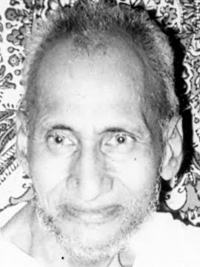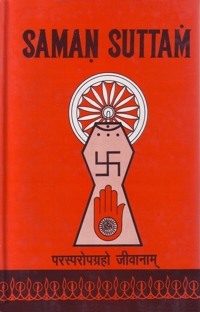42. Niksepasutra
PRECEPTS OF INSTALLATION
Juttisujuttamagge, jam caubheena hoi khalu thavanam.
Kajje sadi namadisu, tam nikkhevam have samae. (737)There is a description of four types of Niksepas (ascriptions) as naming etc. in the scriptures to understand the right meaning of a proposition. (737)
Davvam vivihasahavam, jena sahavena hoi tam jheyam.
Tassa nimittam kirai, ekkam pi ya davva caubheyam. (738)A substance is possessed of various characteristics and for the sake of that characteristic, which is presently under consideration, one and the same thing is described in four ways. (738)
Nama tthavana davvam, bhavam taha jana hoi nikkhevam.
Davve sanna namam, duviham pi ya tam pi vikkhayam. (739)Nama, Sthapana, Dravya, Bhava-these four ways provide the concept of niksepa. Of these nama stands for the name of the thing concerned and is of two types. (739)
Sayara iyara thavana, kittima iyara du bimbaja padhama.
Iyara iyara bhaniya, thavana ariho ya nayavvo. (740)Sthapana is of two types-that which resembles the real shape of that for which is stands, and that which does not. When there is a supposition of one object in the other, it is called sthapana Niksepa, for example, supposing an idol of an arhat as an arhat. (740)
Davvam khu hoi duviham, agama-noagamena jah bhaniyam.
Arahamta-sattha-jano, anajutto davva-arihamto.
Noagamam pi tiviham, deham nanissa bhavikammam ca.
Nanisariram tiviham cuda cattam cavidam ceti. (741 & 742)Dravya (= potency) is of two types-viz. agamato (=that in respect of an authentic text) and noagamato (=that not in respect of an authentic text). Thus the person who knows an authentic text pertaining to an Arhat and yet is not making use of this knowledge of his is agamato-dravya Arhat. Similary, no-agamato dravya is of three types-viz. the knower.s body, the would be knower, one acting in a manner appropriate to the thing concerned. And the knower.s body is of three types-viz. one fallen, one given up, one make to fall. (741 & 742)
Agama-noagamado, taheva bhavo vi hodi davvam va.
Arahamtasatthajano, agamabhavo du arahamto.
Taggunae ya parinado, noagamabhava hoi arahamto.
Taggunaei jhada, kevalanani hu parinado bhanio. (743 & 744)Like dravya bhava (=reality) too is of two types-viz. agamato (=that in respect of an authentic text) and no-agamato (=that not in respect of an authentic text). Thus the person who knows an authentic text pertaining to an Arhat and is also making use ofthis knowledge is agamato-bhava Arhat. On the other hand, the person who ahas developed the virtuous qualities appropriate to an Arhat or one who while equipped with those qualities, undertakes meditation and so is considered to have become a Kevalajnanin (=Arhat) is no-agamatobhava Arhat. (743 & 744)
 Jinendra Varni
Jinendra Varni

